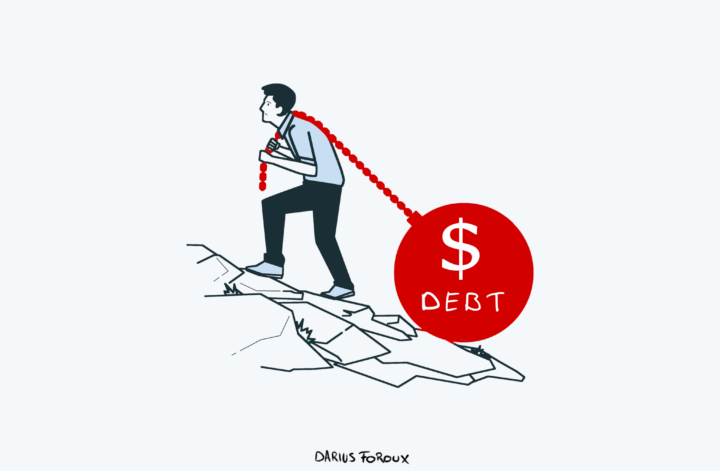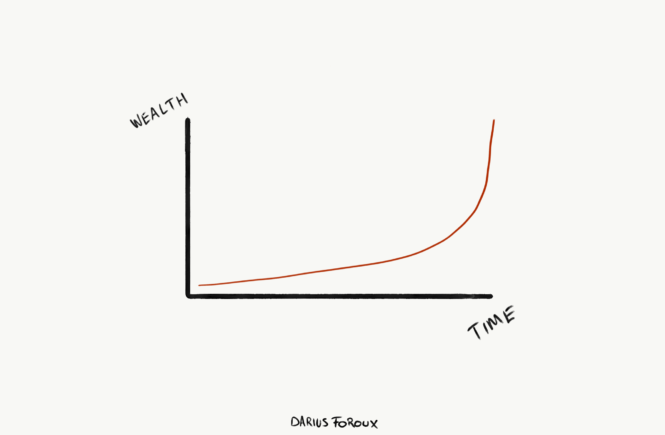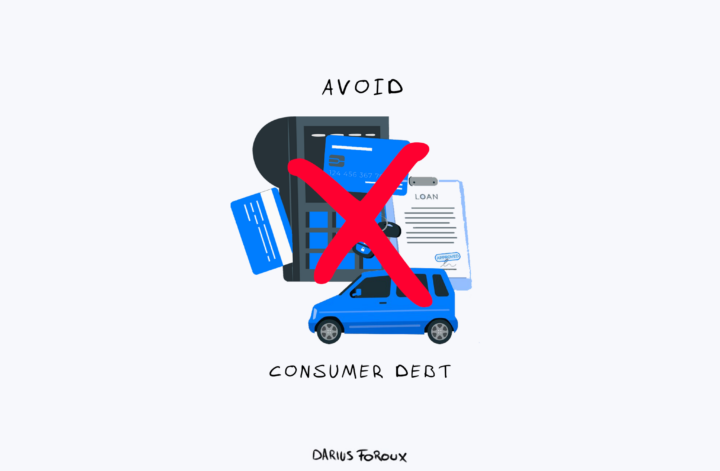Today’s stock market reminds me of 2011. Back then, the S&P 500 was still recovering much of what it lost in the 2008 crash.
By 2009 it had dropped roughly 50% at its worst. Then it slowly started climbing. All the while, many investors were still expecting the worst.
I graduated in 2010 and it truly was one of the worst job markets you can imagine. The global economy was contracting, companies were shedding workers, and no new hiring was happening. Things were so bad that I couldn’t get a job I wanted, so I started a business with my dad.
I was so negative on the economy that I also sold the stocks that I had bought in 2007, right before the collapse.
I was convinced the worst was yet to come. We entered 2011 with that same kind of dread. In April that year, the market slid about 19% through September.
I was out of the market, so I felt good and thought, here we go again! But instead, we started rising. Slowly at first. Then faster. I stayed out of the market until 2015.
The Market Never Does What You Expect
Here’s one big lesson. It often costs you more not being invested than being wrong about timing.
Between September 2011, when the S&P 500 was around 1,173, and September 2015, when it hit about 1,961, the market gained almost 70% over four years.
This year has had its own wild ride:
- In April 2025, markets tumbled. Tariffs, trade war talk, recession fears—all piled on. The S&P 500 dropped roughly 20% from its earlier record highs.
- Then something shifted. Portions of tariffs were paused. Inflation data came in cooler. The market clawed its way back. By May 2025, the S&P had erased its losses for the year. It went from deep red to green.
- As of September 15, the S&P500 is up 12% year to date.
So people who bailed in April thinking things were only going to get worse missed out.
I got a text from a friend in April: “It’s bad.” My reply was something like, “Might get worse. But that’s more reason to buy more.” Did I expect the market to recover so fast?
No. To be honest, I was in the recession camp. But sometimes you see opportunity in panic.
Emotions, Hormones, & Market Behavior
I’m currently reading The Hour Between Dog and Wolf: How Risk-Taking Transforms Us, Body and Mind by John Coates. He lays out some of the hormonal mechanics behind market behavior:
“The research I encountered on steroid hormones thus suggested to me the following hypothesis: testosterone, as predicted by the winner effect, is likely to rise in a bull market, increase risk-taking, and exaggerate the rally, morphing it into a bubble. Cortisol, on the other hand, is likely to rise in a bear market, make traders dramatically and perhaps irrationally risk-averse, and exaggerate the sell-off, morphing it into a crash.”
We’re seeing both now. The fear from April, the anxiety, but also rising enthusiasm, especially around AI, and most importantly, rising earnings.
Are we in a bubble? Possibly. But as long as companies keep growing their earnings, investors will keep buying stocks.
There is a lot of excitement. But this isn’t new. These cycles of greed and fear have been happening for a long time.
My Psychology This Year
I’ve noticed my own stance shifting, partly because of my life situation. Buying a house with my wife. Baby on the way. So I’m more cautious/bearish on the economy than I might otherwise have been. I’m leaning more towards protecting capital than aggressively trying to compound it.
Compare that to a year ago, when I was more aggressive with my trading account. Now I’m more cautious, staying away from margin, but also more aware of what I can lose, but also what I can miss.
Here’s what I think matters, especially in times like this:
- Don’t try to time the market. Missing recoveries often hurts more than riding out drops.
- Stay invested if your time horizon allows. The long-game tends to work out better than trying to guess highs and lows.
- Manage risk wisely. Don’t bet more than you’re comfortable losing. Position sizes, diversification, quality companies matter.
- Lean into opportunities in dips. When markets fall 10-20%, I personally feel more comfortable deploying capital. Because those drops often precede strong recoveries.
- Know your emotions. Fear, greed, cortisol, testosterone—all of it influences decisions. Recognizing when you’re being driven by fear or euphoria helps you make better choices.
And there’s one very important thing to remember. The legendary trader, Jesse Livermore, once said:
“A body in motion tends to stay in motion until a force or obstacle stops or changes that motion.”
When stocks are climbing, they often keep climbing—longer and faster than most expect—until something truly significant knocks them off course.
The mistake many investors make is assuming every dip or scary headline is that “force” that will stop the trend. More often than not, it isn’t.
Momentum can carry prices far past what feels rational. The smarter move is to respect that momentum, manage your risk, and wait for genuine shifts in fundamentals before betting against a trend.
Being Wrong Versus Being Late
The market may be making new highs now, but that doesn’t mean things are free of risk. Inflation, tariffs, recession fears, all of that’s real.
On the other hand, past behavior shows that markets tend to climb from fear and uncertainty.
I’m staying invested and staying disciplined. Be contrarian when logic supports it, but don’t fight the trend for its own sake.
Because the biggest losses often come not from being wrong, but from being late.




